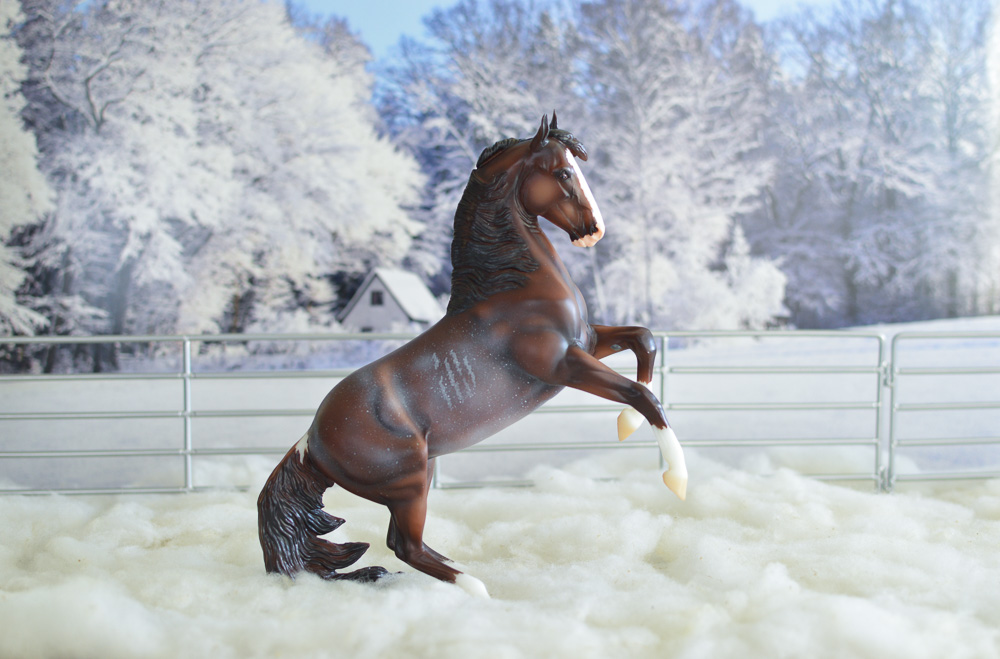Recently there have been a couple of interesting discussions around declaring color when photo showing models. In one case a judge claimed that a shower couldn’t declare a color on an OF plastic model other than what Breyer had declared; in another the judge insisted that a Fjord color designation had to use the Fjord registry specific terms (and curiously, the English translation of those terms, not the original Norwegian).
So here are my questions for discussion:
-
Should we require color next to breed and gender at all? And if so, how specific should that color be? (IE: “chestnut” or “flaxen chestnut sabino rabicano”?)
-
Does it matter to you if a shower chooses a different label for a model’s color than the manufacturer or original artist did?
-
Does it matter to you if the color matches the label that the registry would apply/require? (Chestnut vs sorrel, grulla vs grey dun or grå)


As a longtime Fjordhest fan, I’m fine with the Norwegian terms, though the use of words that mean “grey” (not greying) and look like English “black” (“blakk” used for dun, “svart” translating for black) are confusing at first. What makes the Fjords trickier is that the grablakk/black dun/grulla has warmer and cooler shades and almost universally does not have a mealy muzzle, while the other more common colors (bay and chestnut dun) are usually mealy. Re OF Breyers, the Fjord offerings on the Astrid mold have been grablakk (premier) and brunblakk (portrait RR), for the Eberl SM, the 2025 set of Stablemates in realistic colors is grablakk.
Using the Region X tag system, I believe you end up with breed and gender on the tag, with any explanation of color on documentation. It’s the unusual colors and partbreds that usually require documentation. My vintage CM Fjord by Julie Froelich is in umber and cream tones, so liver chestnut shade mealy dun, rodblakk. Cherrie Nolden in 2018 cited Cream, Agouti, and Red/Black (Extension) at work in various color inheritance outcomes.
The NFHR (CO, USA) confuses matters by leaving the out the word “dun” with gray in its list of colors on its website: “One of their unique characteristics is that approximately 90% of all Fjord Horses are brown dun in color. The other 10% are either red dun, gray, white or “uls” dun, or yellow dun. The Fjord Horse retains the “wild” dun color of the original horse as well as the primitive markings which include zebra stripes on the legs and a dorsal stripe that runs from the forelock down the neck and back and into the tail. Dark stripes may also be seen over the withers. Red duns have reddish-brown stripes and body markings. Gray duns have black or very dark gray stripes and markings. The white or “uls” dun is a very light body color with black or gray stripe and markings. The yellow dun have a darker yellow stripe and markings, they may have a completely white forelock, mane and tail. The yellow dun is a very rare color in the breed.”
List of colors from Norsk Fjordhest Senter with their translations: brunblakk (brown dun), ulsblakk (uls dun), rødblakk (red dun), gulblakk (yellow dun) og (and) gråblakk (grey dun) — Norsk Fjordhest Senter website (Norsk and their Eng. translation)
Both the US registry and the Norwegian organization omit kvit (double-dilute cream, with the dun factors, white coat with pink skin), which is considered undesirable and may have limitations on registry depending on current rules. This is different from “white” or “uls” dun, which is very pale with mininimized expression of black markings.
A good overview: https://ddungard.com/color-genetics-in-fjords